In this post we explain the five cognitive stimulation activities for children most used by NeuronUP professionals.
Cognitive stimulation comprises all those activities that allow the child’s cognitive functions to be stimulated, developed, improved and maintained (Orientation 1.2 Attention 1.3 Memory 1.4 Language 1.5 Executive functions 1.6 Gnosias 1.7 Praxis 1.8 Visuospatial skills 1.9 Social cognition 1.10 Difficulties in cognitive functions). Each of these cognitive abilities plays a specific role in the process of adapting to our environment; therefore, early cognitive stimulation of these abilities is highly important in the learning of children with special educational needs as it allows greater autonomy and interaction with the environment, improving their self-esteem and reducing the anxiety that children with pathologies may experience.
One of the main objectives of cognitive stimulation for children is to improve the basic learning processes, especially in those children with attention deficits or short-term memory problems.
Cognitive stimulation activities for children:
1. The Magic Word
What does it involve?
The classic Word Search remains the cognitive stimulation activity for children most chosen by professionals to work on attention with young children.
Personalization of the activity
NeuronUP offers therapists the possibility to edit the Word Search by personalizing the words to stimulate patients with aspects of their daily life. For example, creating a personalized Word Search with the names of their classmates:
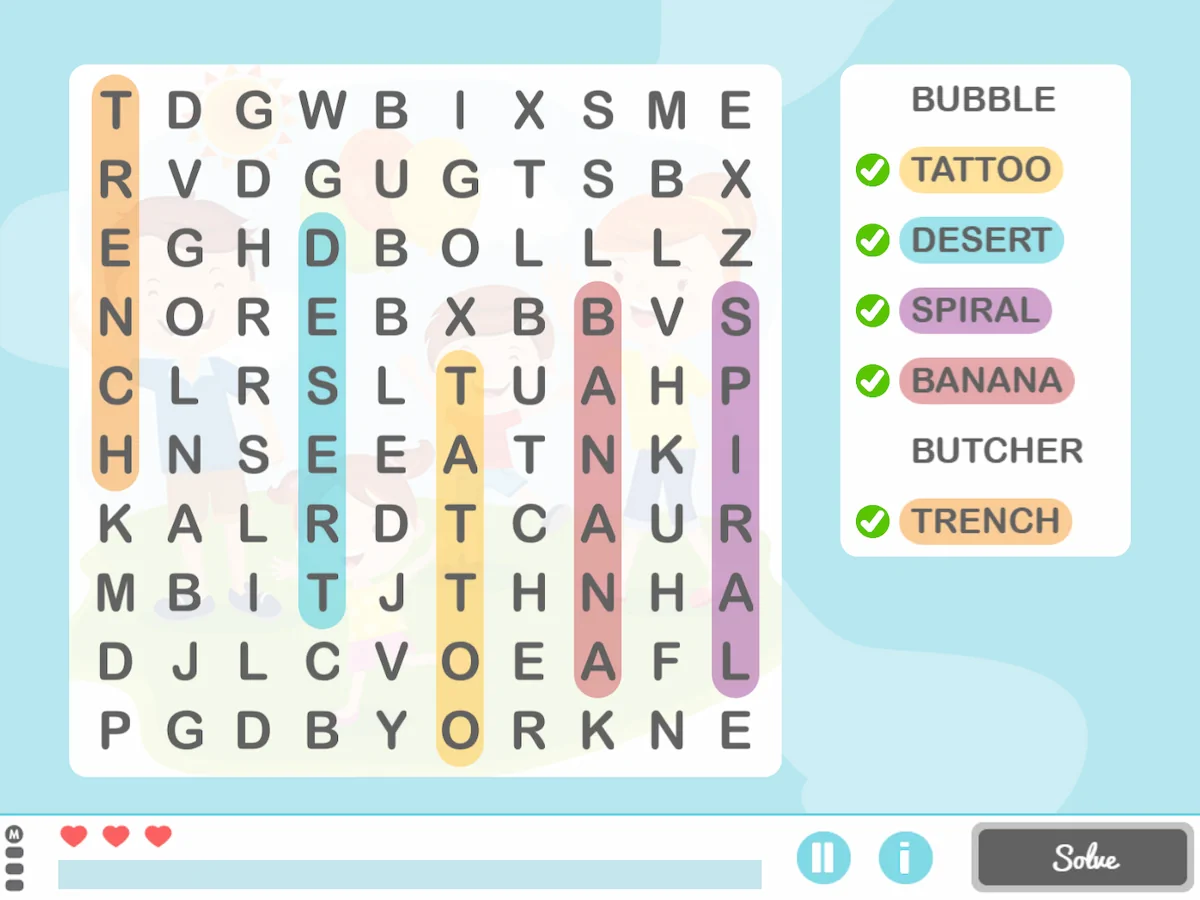
2. Follow the Path
What does it involve?
Follow the Path is an activity to work on alternating attention and inhibition in which the child must follow the steps marked by the drawings to reach the castle.
Play by levels
In addition, it has five levels so that the professional can adjust the exercise to the needs of each child.
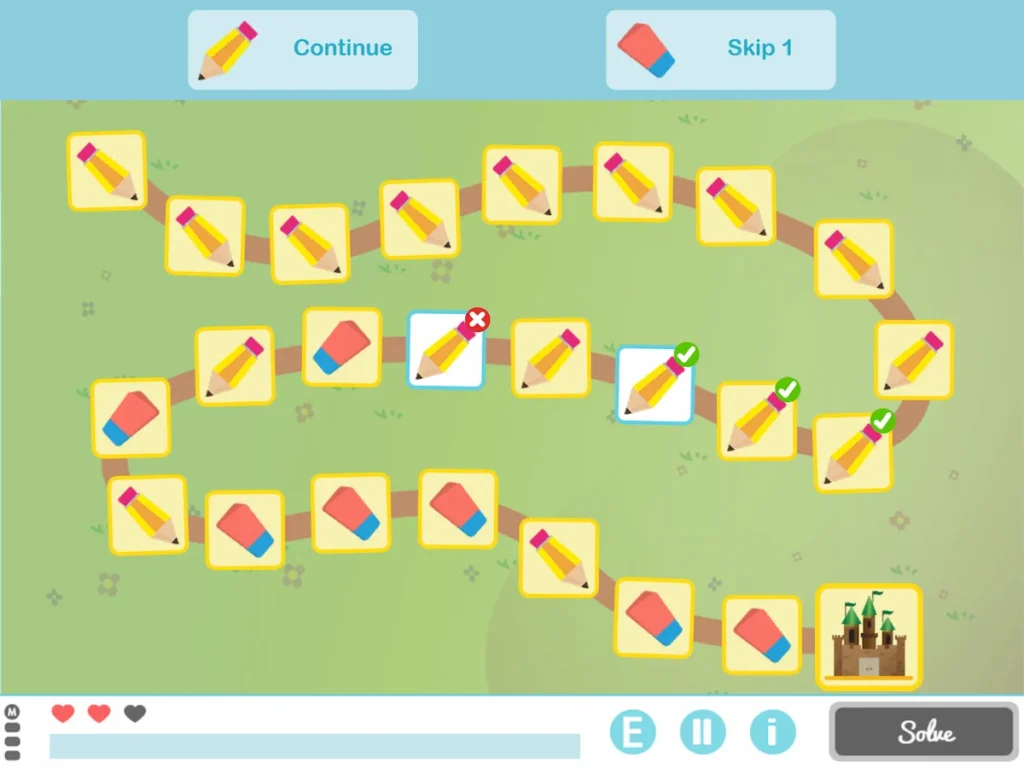
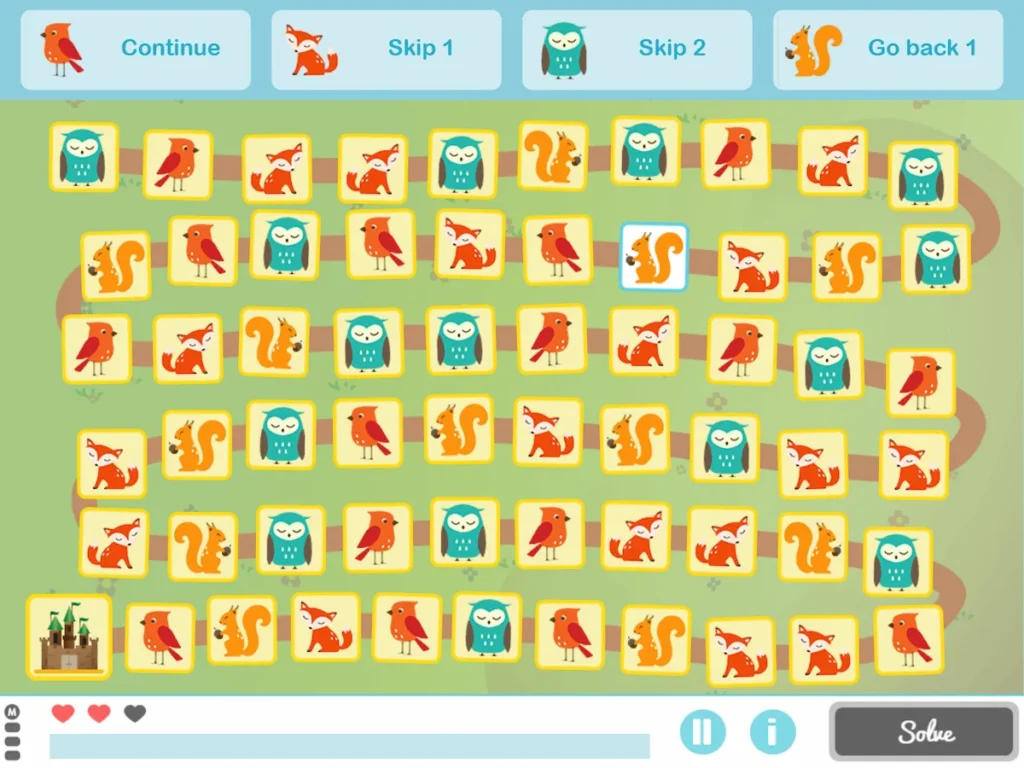
Right Now is quite more complicated, isn’t it? Are you able to do it? Try it! In the following image we show you the solution:
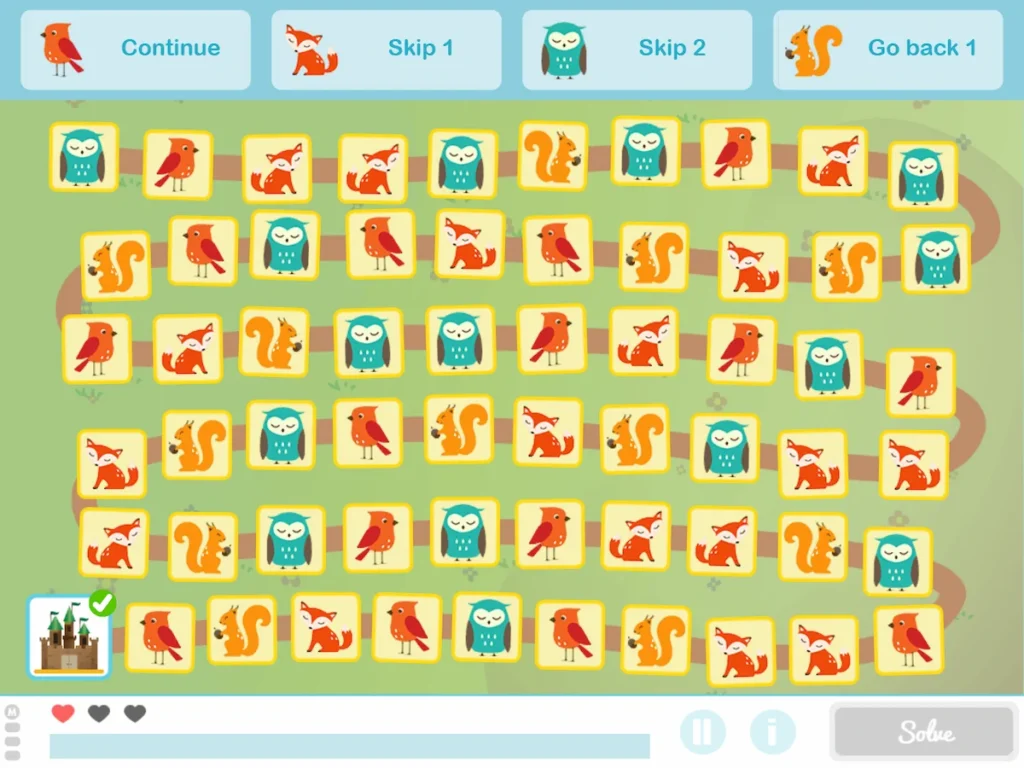
3. Common Items
To work on selective attention and semantic memory, Common Items is the ideal activity.
What does it involve?
Children must select a series of specific items among a group of stimuli. For example, in the following picture children have to identify the objects that are usually used in winter:
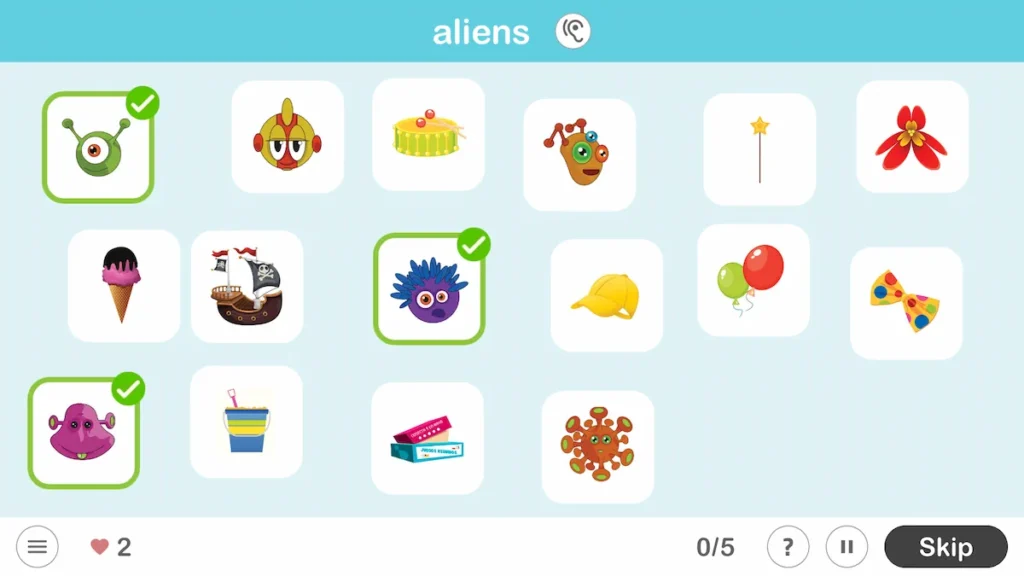
4. Hide-and-Seek with Letters
This cognitive stimulation activity for children consists of searching among a group of letters only for the indicated letter. Be careful—it’s easy to miss one!
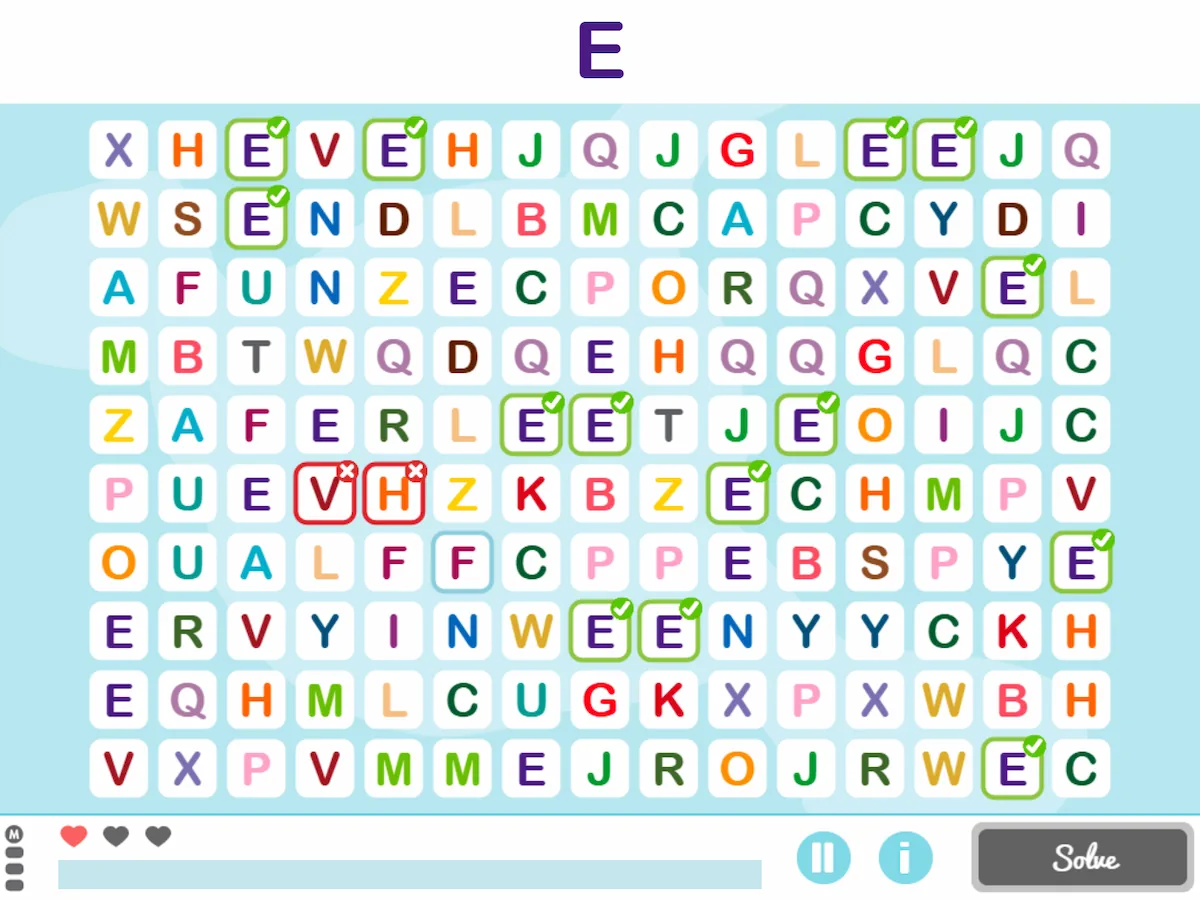
What is worked on with this activity?
It mainly trains the selective attention.
5. Animal Pairs
What does it involve?
Pairs of cards, another classic cognitive stimulation activity in which children have to discover the pairs among a group of cards placed face down.
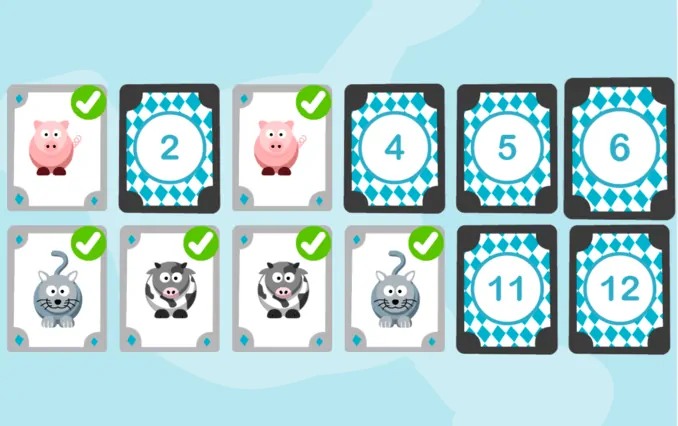
What is worked on with this activity?
In this case, the professional will work with children on episodic memory, selective attention, as well as working memory.
Personalization of the activity
Also, as you can see, NeuronUP offers the possibility to number the cards so that if the professional conducts group therapy it is easier to identify the exact card to which the children are referring.
Child neurological development
The development of the nervous system is a complex process that results in the maturation of brain structures, the acquisition of cognitive skills and, ultimately, the formation of the individual’s personality. In the first years of life, our brain is in a maturational process in which new neural connections are continuously established and structural growth occurs. At early ages, the brain has greater plastic capacity, which encourages a period in which the acquisition of both cognitive functions and motor skills, language abilities, social and emotional skills is favored. This plastic capacity of the brain also facilitates the recovery of those abilities and functions that are altered.
Although we often refer to the terms maturation and development similarly, we must not forget that maturation is a genetically determined process that involves the gradual organization of neural structures, while development refers to the increase and refinement of functional skills. Therefore, genetic and environmental factors act on the maturation of the nervous system, which is translated into the development process.
Both in the initial phases of growth and development and in the later stages of aging, a series of changes occur in the organization of the central nervous system (CNS). In addition, both physiological stimulation and environmental conditions and experiences can also produce these changes in brain plasticity (learn more about brain plasticity and neurorehabilitation).
The key biological phenomenon in development is the consolidation of cortical circuits. Myelination of these circuits begins at 8 weeks of gestation and is practically complete by 2 years of age. During this period, neuronal circuits have great plasticity as we have already mentioned, being very sensitive to external stimuli, allowing an early intervention in neurodevelopmental disorders.
The refinement and acquisition of skills depends on the child having opportunities to observe, copy and experiment with their peers, as well as on the interaction between their genetics and the surrounding environment, all of which contribute interactively and complexly to the development process. Potential harmful genetic, intrauterine and environmental events (especially sensory under-stimulation) during this time affect the organization and refinement of neuronal structures and can be responsible for delayed cognitive development.
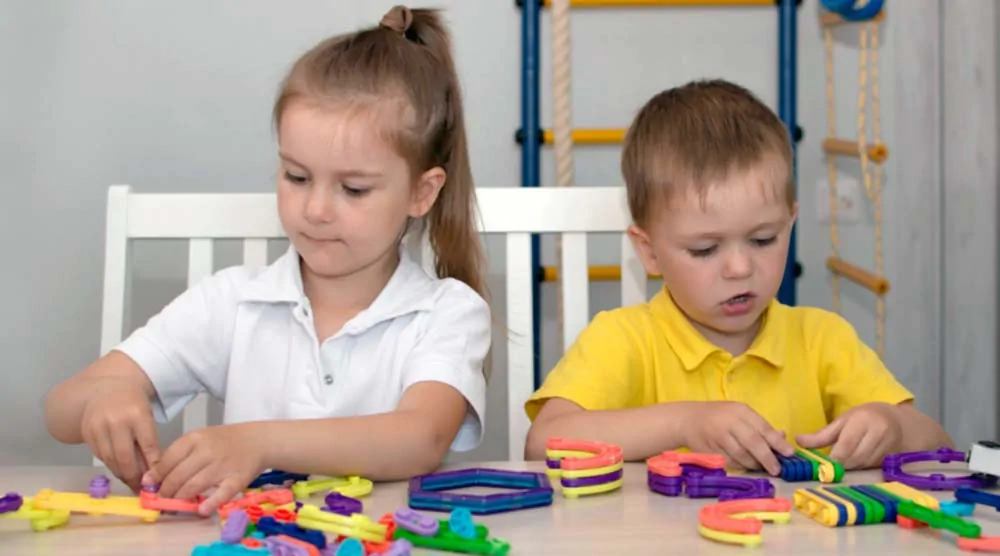
Brain plasticity in childhood
Brain plasticity or neuroplasticity is generally defined as the brain’s ability to reorganize its patterns of neuronal connectivity, readjusting its functionality; it refers to the way our central nervous system changes as a result of its interaction with the environment and as a reaction to its diversity. It has been shown that the brain is a dynamic organ capable of undergoing considerable modifications after suffering injuries or environmental changes. Because of this, great importance is currently given to providing effective rehabilitation in cases of brain injury or appropriate stimulation for early intervention in children to improve neurodevelopment.
In the case of childhood, the brain is in a maturational process and of great modifiability produced by the influence of the numerous experiences and new knowledge that take place. In this way, brain plasticity at these ages is maximal, allowing the acquisition of new learnings and abilities.
It is important to know the characteristics of brain plasticity to understand how the development and evolution of cognitive abilities occur from the earliest ages and to search for the cognitive stimulation strategies best adapted to each child.
Neuropsychological rehabilitation takes advantage of this phenomenon to generate new synapses, although the effect may be limited in some cases. To date there is no established consensus regarding the effect produced by harnessing this phenomenon, as it depends on multiple factors: type of impairment, age, recovery process, cognitive reserve –and associated connectivity–, genetic factors, etc.

Child cognitive development
The child’s brain is not a replica of the adult brain in miniature, but a brain in continuous development, with growth that is sometimes vertiginous, and subject to endless modifications and connections due to the continuous stimulation provided by the environment in which it develops.
Cognitive development evolves progressively through different stages until adolescence, when it finishes consolidating. According to Piaget’s Theory, the different stages and substages through which cognitive development passes (stages of cognitive development) are the following:
- Sensorimotor period: from 0 to 2 years.
In this stage knowledge is progressively acquired through sensory experience and motor activity. Imitation is the basic learning strategy. It consists of six substages:- Exercise of reflexes (0-1 months): the newborn uses innate reflexes to interact with the environment.
- Primary circular reaction (1-4 months): repetition of simple actions directed toward the child’s own body that the child repeats because they are pleasurable.
- Secondary circular reaction (4-8 months): repetition of actions with the aim of producing an interesting effect on external objects.
- Coordination of secondary schemas (8-12 months): intentional behavior appears, the baby is capable of coordinating their secondary schemas, that is, they are able to coordinate several previously learned actions to achieve a specific goal.
- Tertiary circular reactions (12-18 months): the child introduces changes and variations in previously learned actions in order to provoke new experiences and outcomes.
- Invention of new means through mental combinations (18-24 months): internal experimentation takes place, that is, the child has the ability to imagine what will happen if they carry out certain behaviors.
- Preoperational period: from 2 to 7 years.
Between 2 and 7 years children develop language and use the system of symbols to communicate. In this stage both the child’s thought and language are egocentric, that is, the child perceives and understands the world around them from their own perspective without taking others’ perspectives into account.
- Concrete operational period: From 7 to 11/12 years.
Children at this stage use the system of symbols in a logical way allowing problem solving. At this stage they are capable of making classifications and relationships using the principles of conservation, seriation, symmetry and reciprocity.
- Formal operational period: From 11/12 years onward.
At this age the capacity develops to carry out mental tasks that require thinking to formulate hypotheses about problems and reach a solution.
It is essential to know the development of the nervous system and its different stages to understand the deficits that may appear due to abnormal brain development or because of damage to it at early ages. Depending on when these abnormalities or damages occur (during pregnancy, in the perinatal period or during childhood), their repercussions will vary.
Some of the disorders included in this classification can be completely resolved through appropriate intervention. Others are chronic, but in these cases proper intervention is also essential, since it is possible to mitigate to a greater or lesser degree and, in some cases, even eliminate the negative consequences or symptoms produced by the disorder in question.
* Intellectual disability meets all the criteria to belong to this category, but we have considered it justified to assign it its own section.

Subscribe
to our
Newsletter
Exercises and cognitive stimulation activities for children
In addition to the improvement of cognitive skills themselves, cognitive stimulation positively affects other daily aspects:
- Improvement of self-esteem.
- Improvement of personal and social autonomy, both at home and at school.
- Increase in social skills (interpersonal relationships, respect for rules, respect for others, knowing how to listen, etc.)
- Improvement in the understanding of abstract terms.
- Improvement of communicative ability: comprehension and expression, both oral and written.
- Increase in motivation without boredom.
- Learning abstraction and the symbolization of concepts.
- Generalization of different learnings to other contexts.
- Understanding of the importance of learning to function in life.
- Acquisition of school competencies and, later, work-related ones.
Cognitive stimulation activities for children are usually integrated into a cognitive intervention designed by professionals.
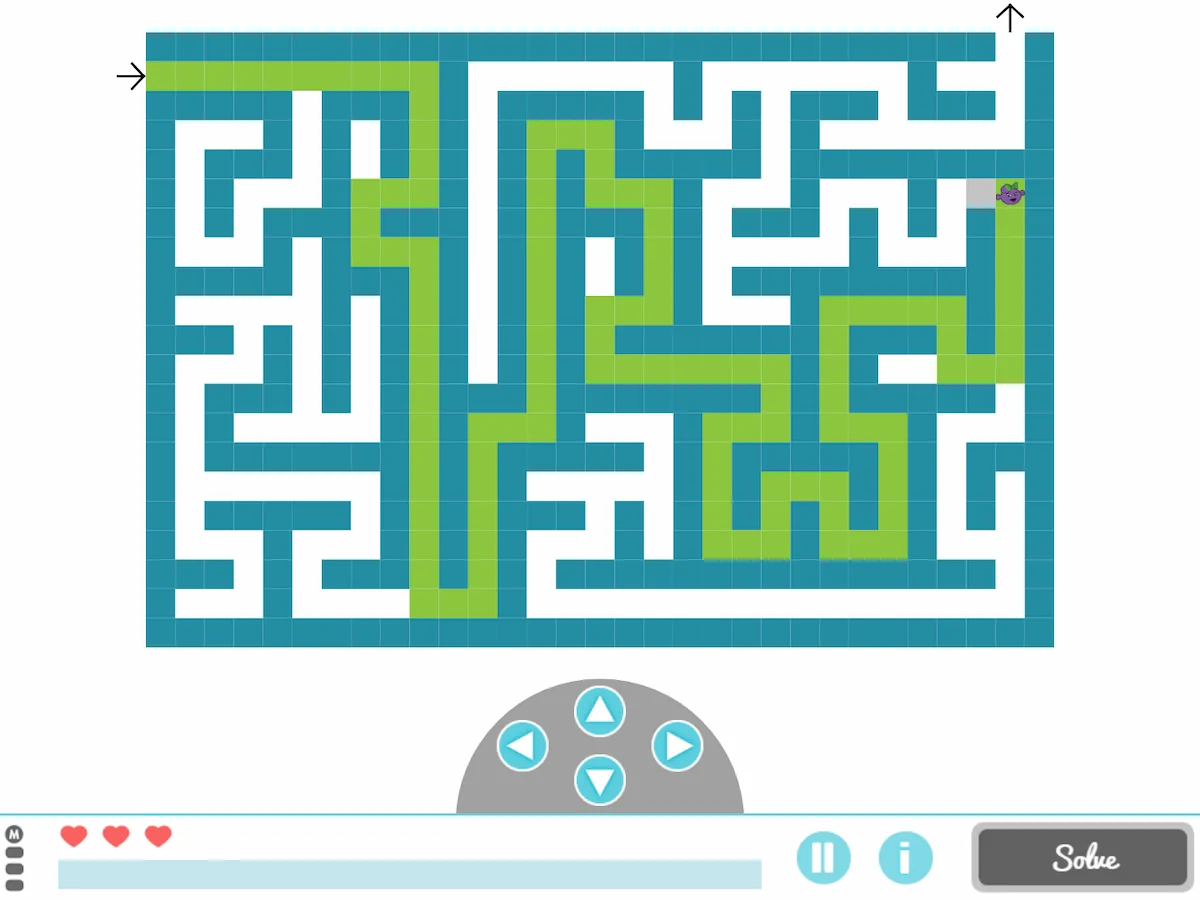
1. Cognitive stimulation through play
The basic way to stimulate the child in childhood and adolescence is through play. Play is an innate activity, characteristic of childhood, that allows the child to learn and relate with their environment. It is spontaneous and voluntary, guided by motivations and internal needs. Play has an end in itself, which is its own realization that is pleasant and enjoyable for the child, who takes an active and interactive role. In addition to being a rewarding activity in itself, play is a stimulating activity that requires the functioning of different components of child development. Learnings that take place through play are assimilated more quickly and effectively by activating the cognitive abilities that will facilitate understanding of the environment.
Among the different objectives of play related to the development of cognitive abilities we can highlight: stimulating abilities such as reasoning, reflective and representational thinking and comprehension; working on memory and attention through interaction with environmental stimuli; encouraging the decentering of the child’s egocentric thought; developing imagination and creativity and the distinction between fantasy and reality; enhancing the development of language and abstract thought; and developing personal autonomy.
2. Cognitive stimulation through sport
Sport, something usually associated with physical activity, is also fundamental for cognitive development. Motor training and the cognitive work that sport implies, as well as the frequency and intensity with which it is practiced, produce modifications at the brain level that help the development and improvement of cognitive abilities. While performing physical exercise certain neurotransmitters are released as well as endorphins, the latter related to the reduction of stress and anxiety levels, contributing to a state of well-being.
3. Cognitive stimulation through exercise books and worksheets
Cognitive stimulation workbooks for children are used by educators to work on each of the cognitive abilities such as selective attention, working memory, or orientation, among others. NeuronUP offers exercises of varying difficulty that adapt to the children’s level of cognitive development to foster their motivation.
4. Cognitive stimulation with NeuronUP
Another way to stimulate the brain with NeuronUP that is more entertaining for both children and adolescents is the use of new technologies. NeuronUP offers an extensive catalog of games and other digital activities that allow regulating the level of difficulty and adjusting it to the children’s level of development, even working with them on activities of daily living.
References
- Shaffer, D. R. (2000). Developmental Psychology: Childhood and Adolescence. (5th edition) Mexico: Internacional Thompson. Chapter 7: «Cognitive development: Piaget’s theory and Vygotsky’s sociocultural viewpoint.»
- Rice, P (2000) Human development: study of the life cycle. Retrieved from http://books.google.com.pe/books?id=ZnHbCKUCtSUC&pg=PA44&dq=desarrollo+cognitivo+piaget&hl=en&sa=X&ei=6IFnVKykCMKjgwSCtoO4Ag&ved=0CCMQ6AEwAQ#v=onepage&q=desarrollo%20cognitivo%20piaget&f=false
- Stassen, K. (2006) Developmental psychology: childhood and adolescence. Retrieved from http://books.google.com.pe/books?id=sGB87-HX-HQC&pg=PA46&dq=desarrollo+cognitivo+piaget&hl=en&sa=X&ei=6IFnVKykCMKjgwSCtoO4Ag&ved=0CBsQ6AEwAA#v=onepage&q=desarrollo%20cognitivo%20piaget&f=false
- Gutierrez, F (2005) Theories of cognitive development. McGraw Hill: Buenos Aires.
If you liked this post about cognitive stimulation activities, we recommend you take a look at these NeuronUP posts:
“This article has been translated. Link to the original article in Spanish:”
5 actividades de estimulación cognitiva para niños que debes conocer
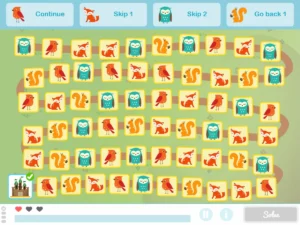

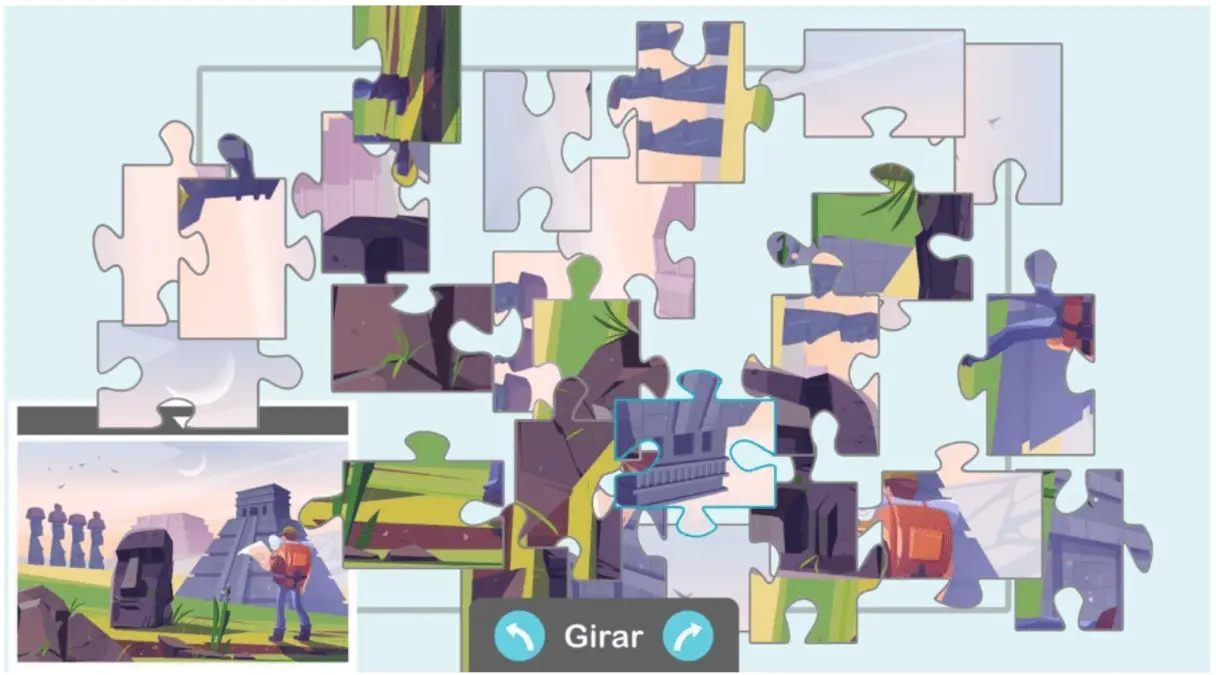




 Hybrid Cognitive Stimulation for Preventive Groups with NeuronUP
Hybrid Cognitive Stimulation for Preventive Groups with NeuronUP
Leave a Reply